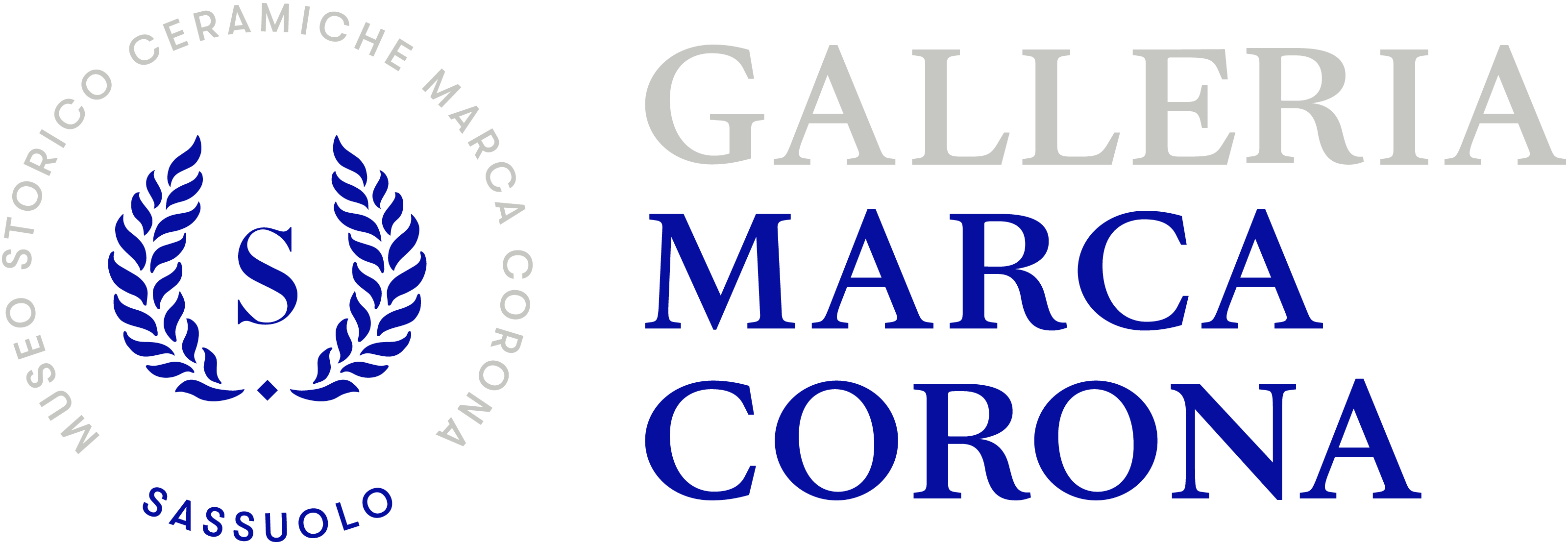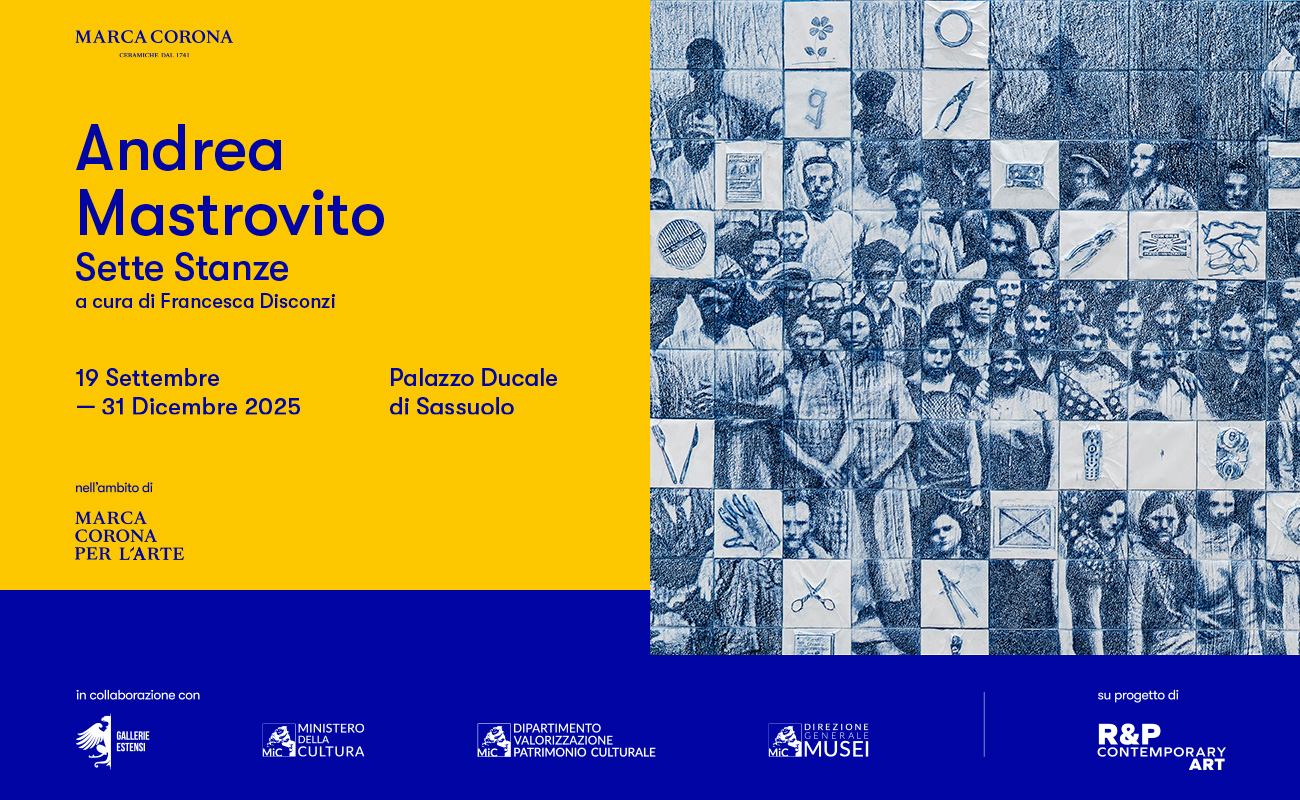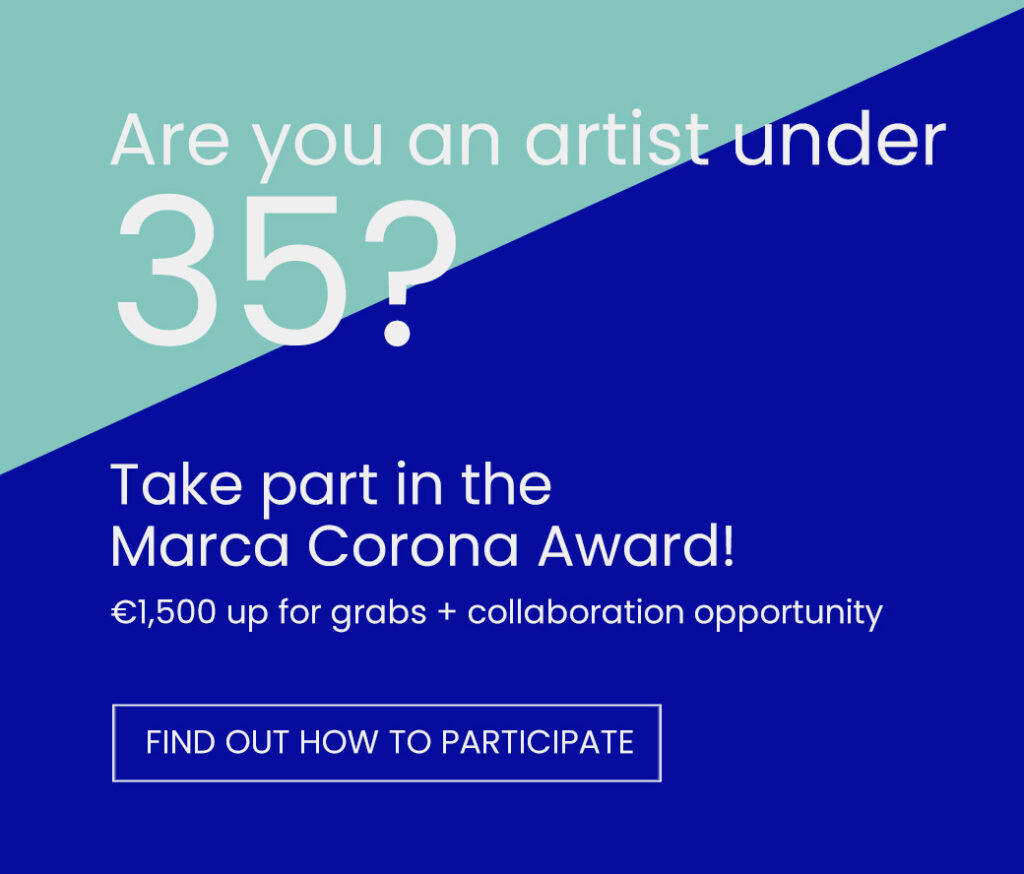In parallel with the 1st day of Festival Filosofia 2025, Palazzo Ducale in Sassuolo opens Sette Stanze, an exhibition dedicated to the works of Andrea Mastrovito.
This personal show – curated by Francesca Disconzi and promoted by Marca Corona together with Gallerie Estensi – will feature various standout works that have shaped the artist’s career:
- from Enciclopedia dei fiori da giardino, displayed in an original new way,
- to the large mosaic panel MCm – Minimo Comune multiplo, original work from the Marca Corona for Art project,
- through to the new works created specifically for the exhibition at Palazzo Ducale and inspired by the sky and water.
Open from 19 September and with free entry on Saturday 20 September and Sunday 21 September, the exhibition forms part of the fringe programme of Festival Filosofia 2025, the multi-location event dedicated to the spread of philosophical knowledge and understanding, which once again this year has partnered with cultural institutions like museums, galleries and other places of artistic and historical interest.
But let’s find out more about the initiative at Palazzo Ducale, the works it will host and the art of Andrea Mastrovito, who recently won the competition to create the Lamb of God (Agnus Dei) that will decorate the cross of the Tower of Jesus Christ of the Sagrada Familia in Barcelona.
The personal show and original works of artist Andrea Mastrovito at the exclusive exhibition in Palazzo Ducale, Sassuolo
Sette Stanze, the exhibition dedicated to artist Andrea Mastrovito, opens on Friday 19 September at Palazzo Ducale in Sassuolo (Modena).
As well as the solo show and the original works by the artist (some of which created specifically for the exhibition and therefore visible for the first time during the event), visitors will also be able to enjoy the unique display designed for this exclusive exhibition.
Starting on the ground floor, it will be possible to admire MCm – Minimo Comune multiplo, the large pastel panel that gave its name to the exhibition of the same name and which now marks the start of this new experience at Palazzo Ducale.
The installation is located in the room dedicated to the “Tra Corte e Fabbrica” exhibition, which displays various unique ceramic pieces that bring together Palazzo Ducale and the historic Galleria Marca Corona company museum to offer a comprehensive overview of the history of the Sassuolo ceramic district.
The work MCm – Minimo Comune multiplo is a genuine mosaic of paper tiles that reproduces a historic photograph depicting the employees of Marca Corona and the company management after the Second World War.
It is characterised by the use of just a single tone, blue, chosen for its strong evocative power. A colour that brings to mind majolica – also found in the fireplaces of Palazzo Ducale – and the history and cultural tradition of the Duchy of Ferrara, cradle of the ceramic district of Sassuolo from 1741.
On this image, the artist has integrated a series of rubbings of everyday objects, drawn by the current workers of the company as part of the collective and participatory art project Marca Corona per l’Arte.
The exhibition project continues on the 1st floor, in the rooms of the stucco apartment, where the works of Mastrovito enter into direct dialogue with the monochromes of the Panza Collection.
The masterpieces of Sims, Spalletti, Simpson, Roeth, Litzmann and Appleby therefore become sources of inspiration from which the artist borrows colours and structures, traces “of the infinite that takes form, a corner of the sky that falls onto the Earth”, to paraphrase Panza himself.
Through original and site specific installations, Mastrovito uses illustrated volumes of various types and, taking away their two-dimensionality, composes flowerbeds, skies and seas of paper in harmony with the geometries of the floors and the colours of the large canvases hung on the walls, simply by repeating the action of cutting and folding their pages hundreds of times.
The centrepiece here is the large work Enciclopedia dei fiori da giardino, together with original new works that will be unveiled during the exhibition itself.
How to visit the Andrea Mastrovito exhibition during Festival Filosofia 2025
The Sette Stanze exhibition by Andrea Mastrovito opens on Friday 19 September in parallel with the start of the Festival Filosofia 2025 weekend. Entry to the event is free and also includes access to Palazzo Ducale of Sassuolo.
It will also be possible to visit the exhibition free of charge on Saturday 20 September and Sunday 21 September.
Andrea Mastrovito will be a guest at the exhibition on Saturday 20 September and at 4 p.m. will hold a special meeting with visitors where he will talk about the works and his journey together with curator Francesca Disconzi.
A unique opportunity to discover the talent and innovative vision of this artist, known for his highly visual works, ranging from painting to cinema, in which traditional creative techniques – drawing, collage, intarsia, video animation – are reinvented to express complex concepts connected with the human condition, narrating stories that invite the viewer to interact, creating an engaging and dynamic experience.
The exhibition at Palazzo Ducale will be open to the public on the following days:
- Friday 19 September
10 a.m. – 10 p.m. (last entrance at 9 p.m.)
- Saturday 20 September
10 a.m. – 10 p.m. (last entrance at 9 p.m.) and meeting with artist Andrea Mastrovito from 4 p.m.
- Sunday 21 September
10 a.m. – 6 p.m. (last entrance at 5 p.m.)
Location:
Palazzo Ducale, Sassuolo
Piazzale della Rosa, 10
Sassuolo (Modena)
After the end of the Festival Filosofia, the exhibition will run until 31 December 2025, with entry included in Palazzo Ducale visitor tickets.
Do you have any questions? Would you like more details on how the exhibition preview works or registering for a guided tour?





